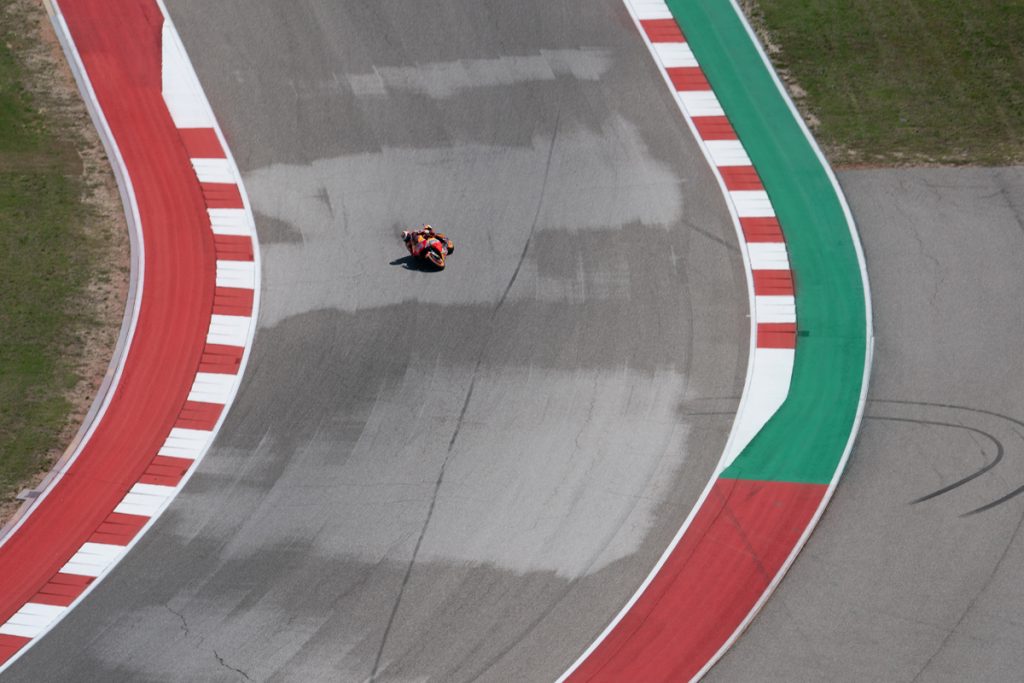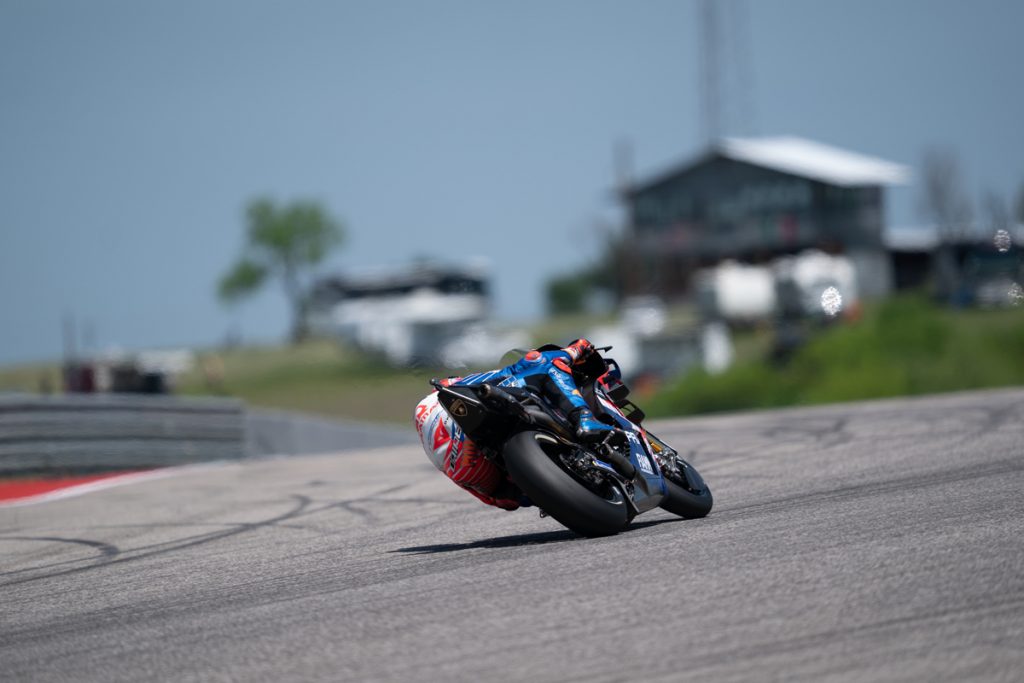There have been several bouts of criticism surrounding the Circuit of The Americas this weekend but 2019 isn’t the first year that voices have been raised about the ominous bumps. The circuit has been rather quiet in regards to the matter that was first flagged in 2017 but riders have been anything but silent. Each subsequent year they have noticed a change in the relatively new circuit – installed in the GP calendar in 2013 – and they have challenged and requested changes to be made. The question at hand though is whether or not these bumps have as much impact as they say…or if they have been spoiled over the years with almost perfectly smooth conditions and should just evolve with the surface.
Since Thursday’s press conference, the spotlight was renewed on the subject of track conditions and not in an entirely positive way. Four years after the inaugural Austin GP, comments started to sift through the media debriefs. It was the sheer wave of bumps scattered across the ribbon of tarmac that prompted such concern. In 2018 Valentino Rossi referred to the state of the circuit as “critical” and – even more cut-throat – “a disaster”. Fast forward to 2019 and not much seems to have changed. According to most, the ripples have only gotten worse and Aprilia Gresini rider Aleix Espargaro was not shy to voice his opinion: “The asphalt is a disaster. It is very bumpy. It is really very dangerous. This is MotoGP, not motocross”.

Speaking to VP of Operations of COTA, Rick Abbott, during Saturday’s track hiatus due to a lightning storm, he politely shared his ongoing fight to even out the circuit’s faults. “While it’s reasonable to expect the riders to adjust to the nuances of all surfaces, we respect their opinions, value their feedback, and are concerned for their safety. We’ve heard the comments regarding track bumps and will continue to address the issues. Following consultation with the FIM, the circuit made major improvements to portions of the track earlier this year. Clearly, there may be more needed”. Although most refer to it as a ‘band-aid’ solution you can’t fault COTA for attempting to solve the issue before heading down the path of a total resurfacing which could set them back months (and considerable expense).
Finding solutions to this issue, Michelin brought several tyre compounds with them this weekend along with team mechanics who are working overtime to find appropriate set ups to cater to riders’ needs. Yet, no matter the level of technology or variety in equipment, the bumps appear to overshadow most glimmers of hope.

Admittedly, through pure observation, the bumps only come into conversation when a rider isn’t doing as well as they would hope. Jack Miller, whose view was similar to the majority, swayed slightly after finding himself well within the top 5. “The track is a little bumpy but we are managing to make it work, I feel comfortable,” he said. Compared his words to teammate Pecco Bagnaia who seemed deflated as he struggled to reach the top 10. “Everything was very, very wrong for me, most of all the bumps. It was very difficult to ride on it”.
We respect each professional’s perspective and understand that their job is not easy nor straight forward, but it slowly becomes another story when generations of men before their time have endured if not more rugged ‘terrain’ and gone with each and every punch as best they can.
Since 1910 racing has been held over rough cut timber, across local railway tracks, on bicycle velodromes, horse-racing ovals and through country lanes. Not long ago Grands Prix were run across railway tracks. There was no perfectly laid path with run off areas and air fences. There was a natural adaptation, which still takes places today no doubt, but the small quirks that made it that much more thrilling were embraced and somehow they worked with it.

Of course there were problems, complaints and massive safety concerns and the sport has made huge strides since. Motorbikes have become a hell of a lot more advanced but maybe (just maybe) racers have grown to be a little too precious that the tarmac is smooth and there are blue skies overhead rather than just trying to beat the challenge in their faces and under their wheels.
Have they become too wrapped up in the evolution of technology that the issues now become the natural world around them? We live in an age where electronics and machinery have become even more vital in the weekly process to the point where it fells like the rest should almost be unquestionably correct. No cracks, no bumps, no dust, no dirt, just a perfectly laid out map that these grunt filled machines and their masters can race upon.
By Sienna Wedes @siennawedes
Photos by CormacGP @cormacgp








